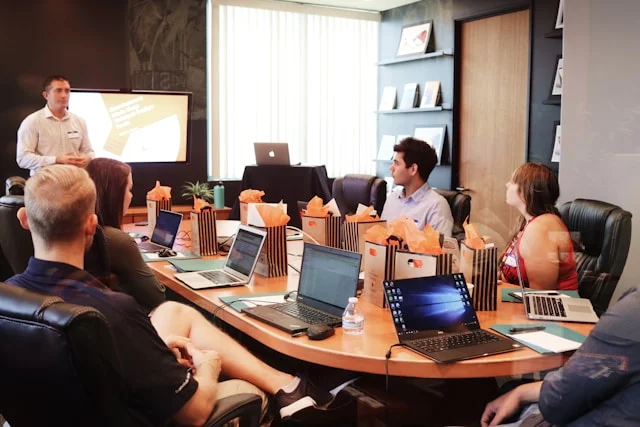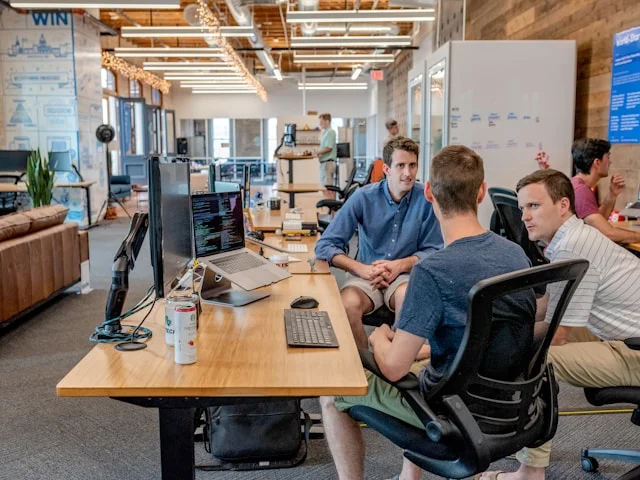The Five Whys is an iterative interrogation process that’s primarily used to identify the root cause to a problem. It works by simply asking the question “Why?” repeatedly until you find a root cause. It was made famous by Toyota.
Summary by The World of Work Project
The Five Whys Approach To Finding Root Causes
The five whys has an important role to play in problem solving. It is used within the A3 Thinking approach to problem solving.
When looking for effective long term solutions to problems, it’s essential to understand the actual root causes as to why something is happening. Five Whys analysis is a process to identify these root cause. It works by getting people to repeatedly ask the question why. Each why drills down into each previous answer until they have reached the root cause.
Example
Many examples of the five whys in action are available on the internet. For our example, we’ve chosen to focus on the Jefferson Memorial, in Washington DC. The story, which may be apocryphal, goes that the memorial was eroding very quickly, meaning it was becoming expensive to maintain.
The five whys method was used to identify the root cause to this problem. The iterative process went like this:
Why 1: Why was the Memorial eroding so quickly?
Because high powered sprayers were being used to clean the monument every two weeks.
If this was as far as the questioning process went, the solution would be to look for a new cleaning solution. Or perhaps looking to change the chemicals.
Why 2: Why was the monument being spray cleaned every two weeks?
Because there was a large amount of bird droppings on it.
If this was as far as the questioning process went, the solution would be to perhaps find a new way to remove the bird droppings. Or perhaps to find a way to prevent the birds fouling the monument, maybe with netting.
Why 3: Why were there so many birds at the monument?
Because the birds were all attracted to the monument by the large number of spiders that resided there.
If this was as far as the questioning process went, the solution would be to perhaps find a way of removing the spiders. Pesticide could be an option.
Why 4: Why were there so many spiders at the monument?
Because the spiders were attracted by the large number of insects there for them to feed on. We know it’s starting to sound like the old lady who swallowed a fly. but stick with it!
If this was as far as the questioning process went, the solution would be to perhaps find a way of removing the insects. Again, pesticide could be an option.
Why 5: Why were there so many insects at the monument?
Because the insects were attracted by the high powered lights that were turned on around dusk.
Having made it all the way through the five whys, investigators found a root cause: the lights, and specifically the time they were turned on.
The solution that ended up being implemented was to turn the lights on a little bit later, after most of the insects had gone to sleep for the night.
The Outcome
This solution was much simpler and cheaper than the other solutions that would have been implemented had the five whys not been fully used.
As a result of turning the lights on later, they attracted far fewer insects, which reduced the spider population, which reduced the bird population, which reduced the bird fouling, which meant the monument needed to be cleaned less often, and with less corrosive cleaning agents. A side effect of the solution was a saving in electricity costs as well.
Interestingly, the same problem of deterioration is being faced by the Taj Mahal, and similar root cause explorations have been undertaken there.
Learning More
Thinking about what we do from different perspectives and with others is very helpful for decision making. Tools like the reframing matrix process or hackathons can help us do this.
Part of the reason we’re not great at problem solving is that we all have thinking habits and cognitive biases that restrict our creativity. In particular, these decision making biases often lead us towards bad (or irrational) decisions. And sometimes we make decisions just because ISLAGIATT…
Solving problems as a team using things like The A3 Problem Solving Process improves our problem solving. Similarly, an ease/benefit matrix helps us decide what to focus on in the first place. When we are actually working on things like this in groups it’s useful to use techniques like silent brainstorming to get the best results.
To learn more about creativity, innovation and problem solving, you might enjoy the third of our three podcasts specifically on these topics. It focuses mainly on cognitive processes:
The World of Work Project View
The five whys is a fine tool to know about and a good rule of thumb to follow.
Of course, you don’t need to do exactly five iterations to find the root cause. Sometimes you need more and sometimes less. All you really need to know is the key point: you should keep drilling into things and not take the first possible solution that you see.
Regarding the various examples that exist to demonstrate the five whys, we’re not really sure that they’re true. They could all be apocryphal, but even if they are they are nice and they help bring the concept to life.
From our experience in the world of business, this method is used to some extent. But it could be used more effectively. It’s important to keep drilling into problems if you’re to really find their root cause, and this may not be being done as well as it could be.
How We Help Organizations
We provide leadership development programmes and consulting services to clients around the world to help them become high performing organizations that are great places to work. We receive great feedback, build meaningful and lasting relationships and provide reduced cost services where price is a barrier.
Learning more about who we are and what we do it easy: To hear from us, please join our mailing list. To ask about how we can help you or your organization, please contact us. To explore topics we care about, listen to our podcast. To attend a free seminar, please check out our eventbrite page.
We’re also considering creating a community for people interested in improving the world of work. If you’d like to be part of it, please contact us.
Sources and Feedback
The contents of this post have been based on our own experience in work. There are many versions of this, or very similar tools available on the internet.
We’re a small organization who know we make mistakes and want to improve them. Please contact us with any feedback you have on this post. We’ll usually reply within 72 hours.






